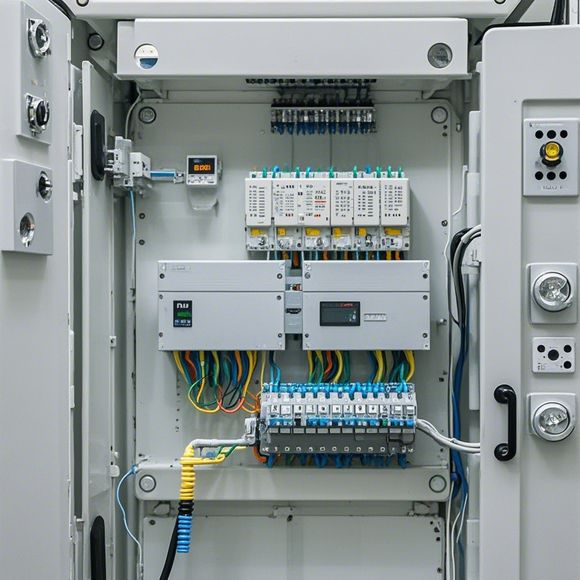What is PID Controller?
PID controller, or Proportional-Integral-Derivative controller, is a type of feedback control system in which the output of an electronic component is compared to a desired value, and the difference between them is then used to adjust the input signal to the component. The P part stands for Proportional, which refers to the direct action of the error signal on the output, giving it a direct influence based on the magnitude of the error. This means that if there's a discrepancy between the actual output value and the set point, the PID controller will try to make up for the difference by increasing the input signal.The I part refers to the Integral term, which accounts for past errors. This means that the controller doesn't just react immediately to changes in the output but also considers how far away from the set point the error has been over time, providing a smoother response.Finally, the D part stands for Derivative, which measures the rate at which the error is changing. This gives the controller an idea of whether the output needs to increase or decrease quickly to keep the system stable.In essence, PID controllers are designed to provide a robust and efficient way to regulate systems, often found in industrial settings like HVAC or robotics.
In the world of manufacturing and automation, there are certain key components that ensure smooth operation and efficiency. Among these, the Proportional Integral Derivative (PID) controller stands out as a vital piece of machinery that regulates various parameters in real-time to maintain stability and performance. So, let's dive into the intricacies of this digital marvel that helps keep your industrial processes in check.
Firstly, let's break down what a PID controller is. In simple language, it's a type of control system that uses three main functions to manage a process - proportionality, integral feedback, and differentiation. This trio of elements allows for precise adjustments in response to changes in the system, ensuring that it operates at its best without overcomplicating things.
Now, onto its function. The PID controller is designed to respond to changes in the system by adjusting the flow of power or other parameters in a specific way. For instance, if a machine starts to slow down due to a fault, the PID controller can quickly detect this drop in performance and initiate measures to bring it back up to speed. By continuously monitoring the performance of the system and making adjustments based on these metrics, the PID controller ensures that the system remains stable and efficient.
But wait, there's more! The PID controller has several advantages that make it an indispensable tool for many industries. Firstly, it's incredibly versatile. Whether you're dealing with temperature control, force measurement, or any other kind of process, the PID controller can be customized to suit your needs. Secondly, it's highly adaptable. With the ability to learn from past experiences, the PID controller can improve over time, becoming even more effective with each passing day. And finally, it's reliable. Unlike some other control systems, the PID controller doesn't rely on complex algorithms or external data; instead, it relies on simple calculations based on inputs and outputs from sensors and actuators.

So, how can a PID controller help you? Well, imagine a factory where every step counts - from raw materials to finished products. With a PID controller in place, you can monitor and fine-tune each stage to ensure that everything runs smoothly and efficiently. Whether you're dealing with temperature control in a bakery or force measurement in a machine tool, the PID controller can handle the job with ease. Plus, with its built-in learning capabilities, the PID controller can adapt to changing conditions and optimize performance over time.
Of course, like any good friend or colleague, the PID controller isn't perfect. It's important to understand its limitations and how they may affect your operations. For example, if the PID controller is too sensitive to small changes in the system, it may cause unnecessary adjustments or even oscillate between two extremes. Similarly, if it's too slow to react to changes, you risk letting problems slip by unnoticed.
To avoid these pitfalls, it's essential to carefully tune the PID controller's settings based on your specific needs and operating environment. This means taking into account factors such as load fluctuations, system delays, and noise levels. With the right balance of sensitivity, stability, and adaptability, the PID controller can provide you with a reliable and robust solution for managing your industrial processes.

In conclusion, the PID controller is a powerful and versatile tool in the toolbox of any modern manufacturer or automation engineer. Its ability to monitor and adjust parameters in real-time makes it ideal for tasks requiring precision and stability. With its built-in learning capabilities and adaptability to changing conditions, the PID controller can help you achieve optimal performance across a wide range of applications. So next time you consider investing in a new control system or software solution, remember that the PID controller is just one of many options available. But if you're looking for a reliable and reliable solution that will help you stay ahead of the curve, the PID controller is definitely worth considering.
Content expansion reading:
Articles related to the knowledge points of this article:
PLC Controller Selection Guide for Foreign Trade Operations
PLC Controller Wiring Guideline
The cost of a PLC Controller: A Comprehensive Analysis
How to Use a PLC Controller for Your Business
The Role of Programmable Logic Controllers (PLCs) in Foreign Trade Operations
PLC Controllers: A Comprehensive Guide to Understanding Their Prices